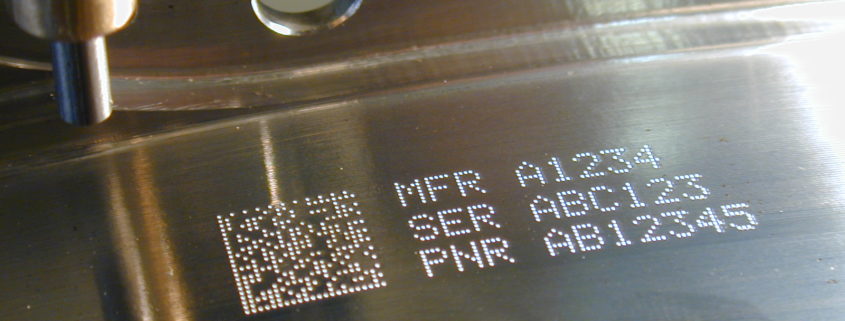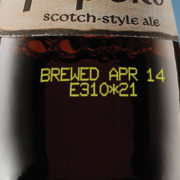Choosing the Right Marking Technology
Marking parts with a serial number, bar code or 2D matrix is becoming more ubiquitous, driven by the need to ensure traceability to control stock and maintain quality. Sometimes known as Direct Part Marking (DPM), this technique is used widely in aerospace, automotive, medical and consumer products.
When faced with the task of choosing the best marking system, there are many factors to be considered including cost, contrast, ability to mark on different materials and permanence. Cyan Tec Systems works with the full range of marking technologies and is ideally placed to offer advice, arrange for sample processing and assist in recommending the optimum solution.
The three major marking technologies for automation are laser marking, dot-peen (or pin) marking and ink-jet marking. Each of the techniques are considered below and the pros and cons discussed.
Laser Marking
Modern laser marking systems are generally compact and efficient with the laser beam focused onto a plane in space using a mirror and lens arrangement such as a galvanometer (galvo) scanner. The surface to be marked needs to be a consistent distance from the laser (to keep the mark in focus) for best results. For safety reasons, laser marking systems require some local guarding (polycarbonate or metal depending on the laser type) to protect the eyes of the operators and personnel nearby.
In terms of quality and ease of automation, laser marking (also sometimes called laser engraving or laser etching) scores highly compared to all the other methods. Lasers offer a non-contact process which is clean, safe, rapid and easily automated to cope with high volume production environments. The small spot size (sometimes less than 50 microns) and high frequency (often more than 10 kHz) can result in very high quality and high-resolution marking which can be very compact (for example in micro-electronics where space is limited).
The range of materials which can be laser marked is virtually limitless although the type and wavelength of the laser will influence the contrast achieved by laser marking. Of the technologies discussed, laser marking is typically the highest capital cost, though the lack of maintenance, high quality and speed can make running costs highly competitive.
Dot-peen Marking
In dot-peen marking (sometimes known as pin marking or stylus marking) a hardened carbide pin is vibrated at high speed to displace the surface of the material leaving an indent. By moving the pin, it is possible to create text or codes which can be human or machine-readable. The method of marking, which leaves an indentation, can result in very limited contrast which could make reading the mark more difficult in some materials. Most often used in metals, the technique can work to a lesser degree in plastics too, though the results depend on the type of plastic.
The cost of dot-peen marking is lower than laser and ink-jet, but the pin is a mechanical item which needs to be checked and maintained regularly to achieve consistent results.
Inkjet Marking
Ink-jet marking relies on the movement of the parts under the ink nozzles to create the required marking (text, barcode, 2D matrix, and graphics). Different coloured inks can be used to ensure contrast and discreet or invisible marking is possible using UV sensitive inks. More advanced inkjet marking systems are capable of full colour photographic quality adding a decorative element to marking. Marking with ink can be used on all materials, and the process can be easily integrated in automated production.
In capital cost terms, the ink-jet solution is cheaper than laser, however maintenance costs, to optimise nozzle performance, and ink consumable costs need to be taken into consideration.
The ink mark can be vulnerable to wear with time, however marking speeds are high and this is often used in the fast-moving consumer goods market.
Summary
Each method of marking has advantages and disadvantages, Cyan Tec is experienced in providing complete solutions including automation for Direct Part Marking and able to give non-biased advice on production solutions including robots, conveyors, lasers, assembly and paint spraying systems.
Standard and bespoke systems are offered with a full service from design through manufacture, a large installed base worldwide is supported by a dedicated team of engineers





